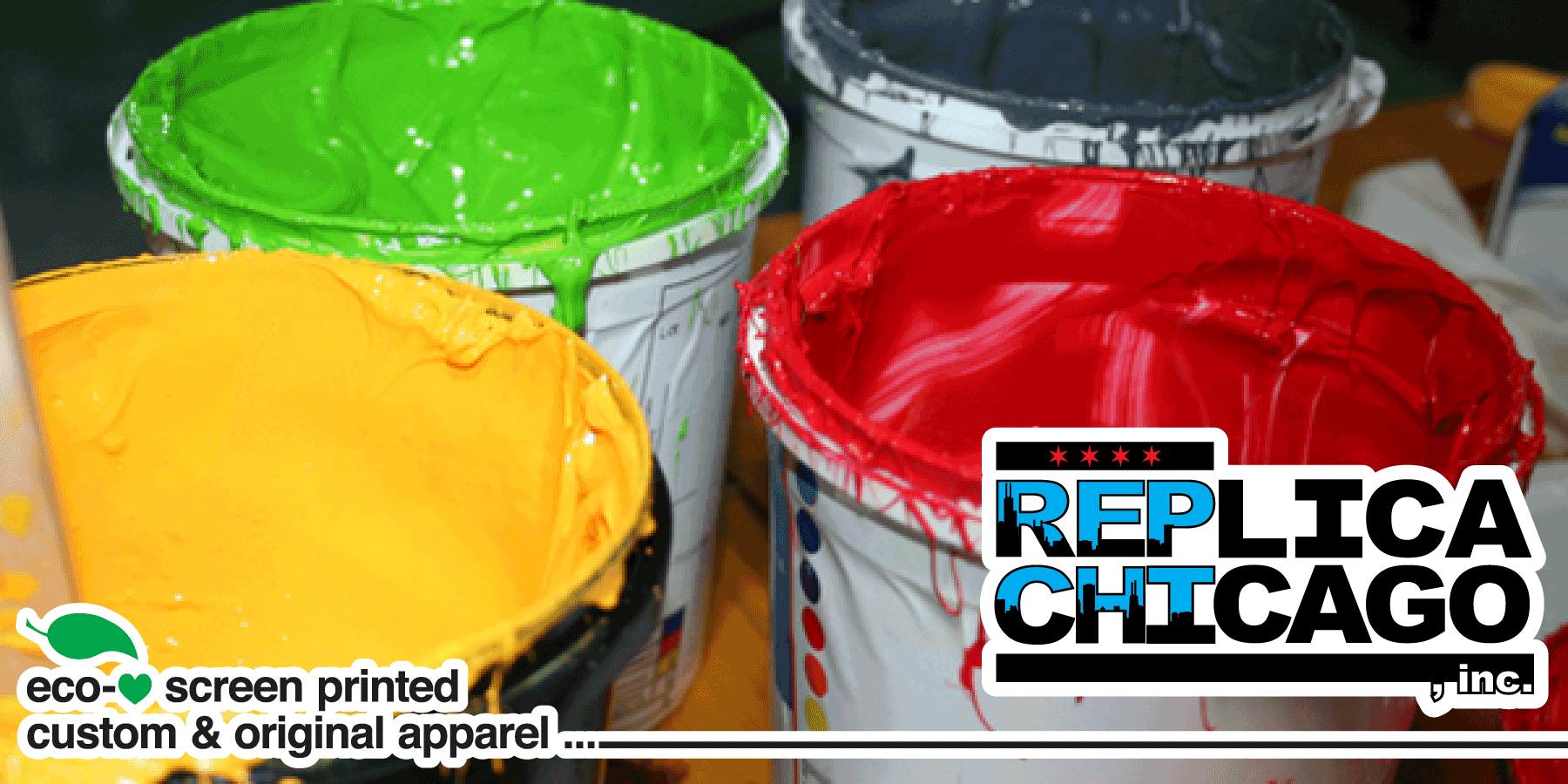High-Quality Custom Screen Printing for Team Apparel
High-Quality Custom Screen Printing for Team Apparel
Blog Article
Display Printing Uncovered: Every Little Thing You Need to Find Out About Tee Shirt and Garment Printing Methods
Display printing is a fascinating approach that integrates art with technique, offering unlimited possibilities for creative thinking. Prepared to discover the essential aspects that make screen printing an art type?
The Essentials of Display Printing: Just How It Works
When you dive right into screen printing, you'll discover it's both a scientific research and an art. At its core, screen printing includes producing a pattern, or display, that enables ink to pass with just in certain areas.
Placement the display over the material, after that make use of a squeegee to press ink via the display onto the garment. Each action is necessary, and grasping them will certainly boost your screen printing abilities, transforming straightforward garments right into distinct, expressive pieces.
Types of Screen Printing Methods
Once you comprehend the basics of screen printing, it's time to explore the numerous methods that can raise your styles. One popular technique is conventional display printing, where ink is pushed with a stenciled screen.
If you're going for great information, think about discharge printing. This strategy removes dye from the fabric, leaving a soft, classic look. An additional alternative is plastisol printing, understood for its durability and dazzling colors, making it a favored for many brand names. Ultimately, explore halftone printing to produce gradient impacts and detailed layouts. Each technique has its one-of-a-kind beauty, so don't think twice to try them bent on locate what fits your style best!
Necessary Tools for Display Printing
To attain spectacular results in display printing, having the ideal devices is essential. You'll require a strong display printing structure, which holds the mesh that transfers your layout onto the garment. Next off, spend in high-grade squeegees; these are necessary for using ink evenly throughout the display.
Selecting the Right Inks and Products
When picking inks and products for display printing, you require to consider the kind of ink that functions finest for your task. Believe regarding material compatibility to guarantee your layouts look excellent and last long. Likewise, check out eco-friendly ink choices to make your printing procedure more sustainable.
Types of Screen Inks
Choosing the right screen ink is necessary for accomplishing dynamic, long lasting prints that meet your job's requirements. There are several sorts of display inks to examine. Plastisol ink is preferred for its versatility and ease of usage, giving superb shade opacity on dark materials. Water-based ink, on the various other hand, offers a softer feeling and is eco-friendly, making it suitable for those looking to minimize their ecological effect. Discharge inks eliminate dye from the fabric, resulting in a soft, vintage appearance but call for certain handling. Ultimately, specialty inks, such as glow-in-the-dark or metal, can include unique effects to your designs. Evaluate your project requirements and choose the ink that straightens best with your preferred outcome.

Fabric Compatibility Considerations
Understanding textile compatibility is crucial for accomplishing premium display prints, especially because different products respond distinctly to numerous inks. When picking inks, take into consideration the fabric type-- cotton, polyester, or blends. For cotton, water-based inks work well, supplying softness and breathability. Polyester, on the other hand, commonly needs plastisol inks for far better bond and dynamic colors. You could need to use a mix of both kinds if you're publishing on blends. Constantly test your inks on example textile to guarantee they adhere appropriately and keep color stability. Additionally, bear in mind that material weight and texture can affect the final end result, so picking the appropriate ink and material combination is important for your project's success.
Eco-Friendly Ink Options
Environmentally friendly inks are coming to be a preferred selection for screen printers that want to lessen their ecological impact while maintaining high quality. When choosing inks, think about water-based inks, which are much less harmful and much easier to cleanse up compared to typical solvents.
Additionally, seek inks made from sustainable sources, such as soy or vegetable-based alternatives. By picking the best inks and materials, you'll not only create spectacular layouts but additionally add to an extra lasting printing process. Make the button, and your prints will certainly reflect your dedication to the setting!
Preparing Your Design for Display Printing

File Style Demands
To guarantee your layout looks vivid and sharp on fabric, you'll require to custom screen printing pay close focus to submit layout requirements for display printing. Make certain your design has a clear background to protect against undesirable white edges on your prints. Keep shade settings in mind; CMYK is common for display printing, so transform your RGB makes appropriately.
Shade Splitting Up Strategies
Shade separation is an important action in preparing your design for display printing, and grasping it can significantly boost your print quality. You'll need to break your design into individual shades, as each color requires a different display throughout printing. Beginning by identifying all the shades in your style and produce layers for each one. You can use software like Adobe Photoshop or Illustrator to separate and separate shades effectively. Be specific to conserve each layer as a different data, generally in a format like TIFF or PSD. This precision not only guarantees accurate shade depiction however also improves the printing procedure. By taking notice of color separation, you'll attain vibrant and professional lead to your screen-printed garments.
Resolution and Size
Attaining the most effective results in display printing begins with guaranteeing your design has the best resolution and size. Ideally, your artwork needs to go to least 300 DPI (dots per inch) for sharp, clear prints. If you utilize lower resolution, your end product might look amateur and pixelated.
When it pertains to dimension, consider the measurements of your print location. Style your art work to match the final print dimension, ideally producing it in the real dimensions you'll be printing. This means, you'll avoid any type of unexpected scaling concerns.
Always inspect your design in both vector and raster layouts. Vector graphics can be scaled without losing high quality, making them perfect for display printing. Preparing appropriately will assure your style looks fantastic on every garment!
Step-by-Step Screen Printing Refine
Screen printing is a vibrant process that allows you to create dynamic styles on numerous surface areas. To get started, you'll need a screen, emulsion, and your picked ink.
Put ink onto the screen and make use of a squeegee to press the ink through the pattern onto the textile. Raise the display very carefully and let the print dry. You have actually effectively display printed your layout.
Tips for Successful Display Printing Projects
While you're diving right into your display printing projects, bear in mind that preparation is vital to success. Begin by collecting all your materials-- inks, squeegees, garments, and displays. A tidy office aids stop unwanted errors, so clean prior to you begin.
Next, confirm your art work is high-resolution and effectively sized for your garment. Evaluate your display for correct direct exposure and clean it extensively to prevent spots. When blending your inks, adhere to the manufacturer's guidelines to accomplish the ideal consistency.
During printing, use also stress with your squeegee for consistent results. Don't hurry; take your time to confirm each print fulfills your criteria. After printing, allow your garments dry totally before taking care of or packaging them.
Lastly, constantly keep an example of your benefit future referral. In this manner, you can analyze your progress and boost your techniques in time. Delighted printing!

Frequently Asked Questions
How Long Does It Require To Establish a Display Printing Task?
Establishing a display printing task typically takes about thirty minutes to an hour. You'll prepare the screens, mix inks, and adjust the press. The time varies based on complexity and experience, so stay arranged!
Can I Print on Various Fabric Enters Utilizing the Very Same Strategy?
Yes, you can publish on various material types making use of the very same technique, yet you'll require to readjust your settings and inks. Some fabrics soak up ink in a different way, so exploring assurances the ideal outcomes for every product.
What Are Typical Blunders to Avoid in Screen Printing?
When display printing, stay clear of common blunders like using the wrong ink, ignoring appropriate direct exposure times, or missing pre-press checks. Always test your setup and keep clean displays to assure quality results each time.
How Can I Effectively Tidy and Keep My Display Printing Devices?
To appropriately tidy and keep your screen printing devices, you must on a regular basis clean screens with proper solvents, check squeegees for wear, and ensure all tools are stored completely dry and dust-free. Consistency boosts and prevents costly fixings performance.
Is Display Printing Environmentally Friendly Contrasted to Other Techniques?
Display printing can be more ecologically pleasant than other approaches, particularly if you use eco-conscious products and water-based inks. By choosing lasting supplies and practices, you reduce waste and minimize your influence on the earth.
Display Printing Uncovered: Everything You Need to Know Regarding Tee and Garment Printing Strategies
At its core, screen printing involves creating a pattern, or display, that allows ink to pass through just in particular locations. Position the display over the textile, then utilize a squeegee to press ink through the screen onto the garment. One preferred method is standard display printing, where ink is pushed with a stenciled screen.When selecting inks and materials for display printing, you need to take right into account the type of ink that functions ideal for your project.
Report this page